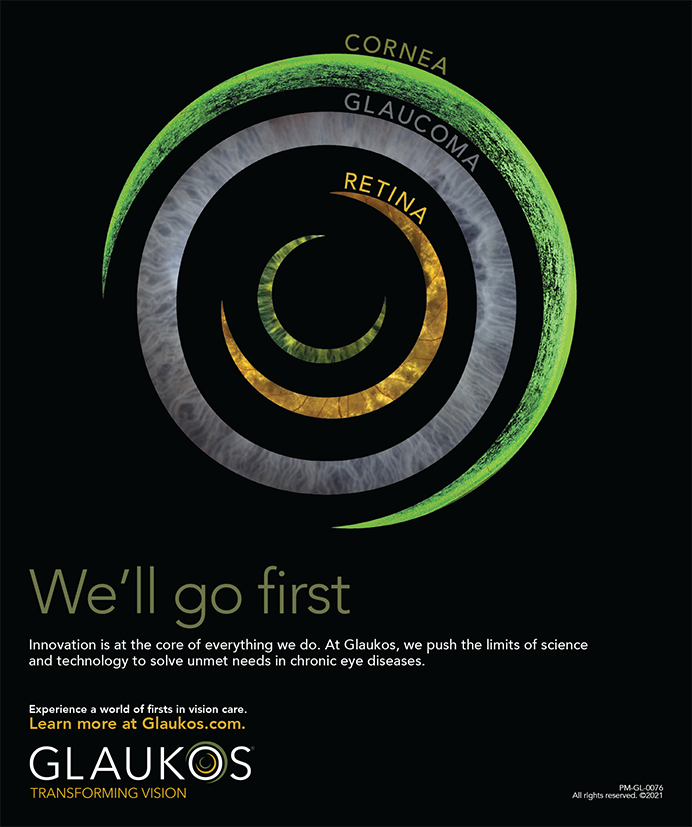
The year 1999 is not just the title of a song and an album by Prince but also when I started my career as an ophthalmologist. One day, my boss, Tyree Carr, MD, said to me, “I will never let one payer dominate my practice ever again.” His practice had blown up a few years earlier. He had been involved with a large, capitated contract when that payer decided to open its own internal ophthalmology department. Kaboom! Dr. Carr ultimately rebuilt his practice successfully, but he focused on fee-for-service for the rest of his career.
Many of my colleagues probably feel similarly to Dr. Carr, but I have spent most of my professional career in managed care, both as an employee working for a health plan and externally in a practice that partners with a health plan. I have come to appreciate the multiple, collaborative systems that must exist to provide effective and efficient care for this patient population. People are living longer, and medical expenses show no signs of stabilizing. Medicare Advantage (MA) plans generally offer seniors an affordable, predictable solution to minimize their out-of-pocket health care expenses, especially if these patients have a chronic disease or comorbidities. There are excellent MA plans that offer patients a growing list of services such as lifestyle centers, transportation assistance, and vision care that are not available through traditional Medicare.
POPULATION HEALTH MANAGEMENT AND CAPITATION VERSUS FEE-FOR-SERVICE
Population health management. This is a more accurate term than capitation to describe large-scale capitation agreements. There is a significant difference between managing a small number of members (which is far more common) and managing much larger contracts, as does Center for Sight (CFS) in Las Vegas, where I practice. According to the American Hospital Association, population health management refers to “the process of improving clinical health outcomes of a defined group of individuals through improved care coordination and patient engagement supported by appropriate financial and care models.”1 These larger contracts must be approached collaboratively, in a spirit of partnership with the entity that holds the ultimate risk (eg, health plan, independent practice association).
Capitation versus fee-for-service. Most eye care providers are familiar with fee-for-service. Put simply, in this payment model, the practice bills and collects for services rendered. In capitation, the practice has a contract with a health plan to be the exclusive provider of services in a certain specialty (see Capitation at a Glance). In this payment arrangement, a set amount is paid for each enrolled member per month. That number may seem insanely low when considered as per-person, but not every member presents for care on a monthly or even annual basis. The upside for the health plan is that its expenses for that specialty are fixed. The downside is that there is a narrow network. If patients are happy, capitation is a win-win for patients and health plans.
Capitation at a Glance
- Capitation establishes fixed payment amounts between insurers and medical providers as part of the health care payment system.
- This model of payment can be used by practices or insurers to pay hospitals and doctors per enrolled patient for a specific amount of time.
- Capitation is designed to lower the costs of health care.
- The rates for capitation payments are developed using local costs and the average utilization of services.
Source: https://www.investopedia.com/terms/c/capitation-payments.asp
Doctors, meanwhile, are paid in advance regardless of which services are provided on any given day or month. The practice must ensure that all members have access to care. Proactive management can help this population achieve better outcomes and meet Healthcare Effectiveness Data and Information Set Measures.
MY EXPERIENCE
CFS, which was established in 2013, had the opportunity to compete for one of the larger contracts in Las Vegas that covers a mix of commercial and MA members. In early 2020, my practice added a large Medicaid population. In essence, I headed down the path that Dr. Carr had lamented years earlier: I started a private practice and opened its doors thanks to one payer. CFS, however, has grown from there.
Earlier in my career, I had served as an employee and, later, as a section head of the eye department at Cigna in Arizona. I therefore felt I had enough experience on both sides of health care to do things differently than other ophthalmologists. Traditionally, physicians who service capitation provide the lowest level of care possible, and they make a living by stretching access and limiting care. It could be said that they focus on the basics and the bare minimum. Initial interest in these types of contracts tends to be defensive in nature; perhaps these providers pursue such contracts because they are sought after by their competitors in the marketplace. In general, these physicians have little to no experience managing these types of health plan contracts.
With larger-scale populations, the stress and pressure placed on an established practice can completely destabilize it and even threaten its existence. At CFS, we built our operational processes and systems to accommodate the daily demand on the practice’s resources, and we made patient satisfaction our guiding principle. For this reason, we educate patients about options that are not offered to them at less progressive practices. We want all of our patients to receive the same level of care rather than to stratify patients based on the payer. By providing coordinated care to this population of 250,000 members, CFS has developed an excellent reputation with both patients and the health plan providers. Our fee-for-service patient population grew quickly as well.
CFS started with three physicians and a loose affiliation with three other community providers. By the end of 2021, CFS had developed into a multidisciplinary practice with 13 doctors (ODs and MDs). Cataract surgery and refractive cataract surgery are our largest service. We focus on education and provide options that meet each individual’s needs. Many patients choose to pay out of pocket for advanced technology such as premium IOLs, laser cataract surgery, and intraoperative aberrometry. The plans’ representatives are happy that their members are being offered all of the options that other patients are being offered outside of their network. Beyond cataract surgery, we offer several dry eye treatments, refractive surgery, and clinical research, all of which has been embraced by our patient base.
During the COVID-19 lockdown, many practices were forced to close, and revenues hovered near zero. CFS stayed open, and our contracts with the health plans kept our income fairly steady. We did not lay off a single employee, and none of our doctors experienced a negative financial impact because of the pandemic. We were all grateful to be capitated providers.
CODING AND BILLING
Capitated arrangements are often referred to as risk agreements because the doctor or practice accepts the risk of taking care of a certain patient population. CFS codes and bills as a normal fee-for-service practice, but the codes are used as encounter data so that the health plan can assess the care that patients receive.
The encounter data are used to value the care and contracts going forward. CFS does not spend months billing and collecting for each patient because the bulk of our reimbursement is derived from the plan on a per-member, per-month basis.
CONTINUED GROWTH
Since 2013, the number of patients in CFS’ capitated network has grown steadily, and the number of our fee-for-service patients has grown in tandem. Private equity firms have acquired a significant number of eye care practices here in Las Vegas. Whether these firms will try to get involved in practices with capitation involved, only time will tell.
1. Population health management. AHA Center for Health Innovation. Accessed June 25, 2021. https://www.aha.org/center/population-health-management




